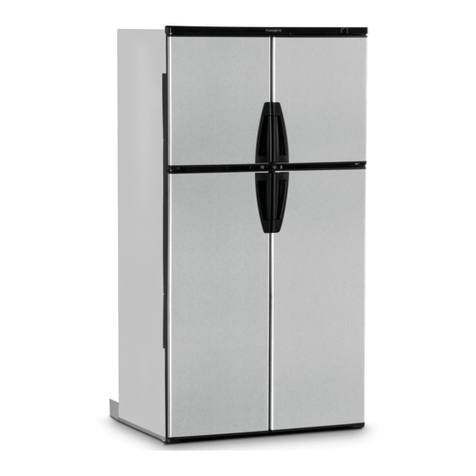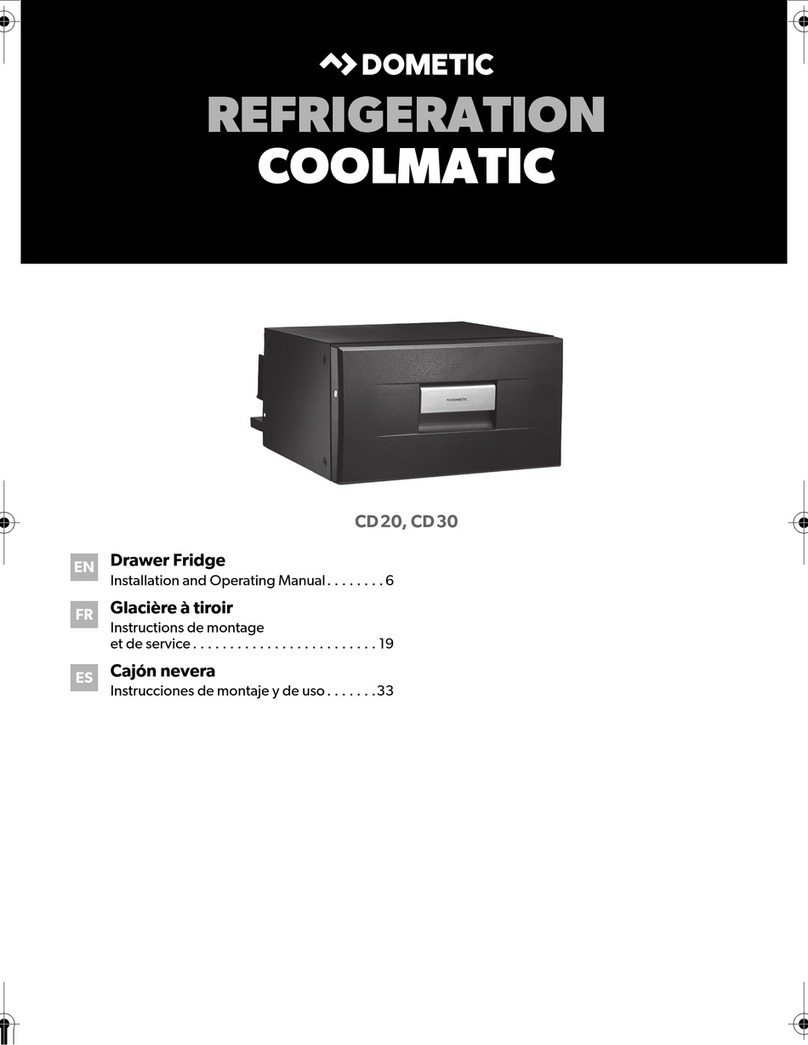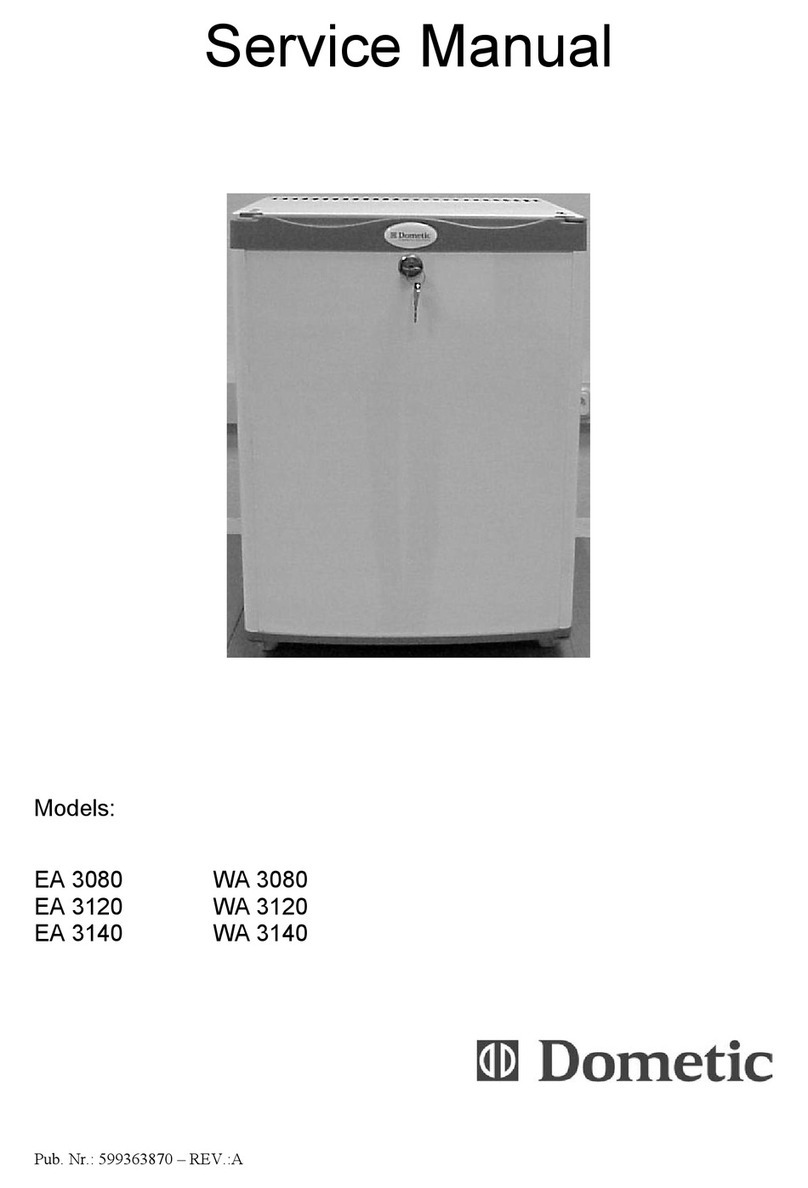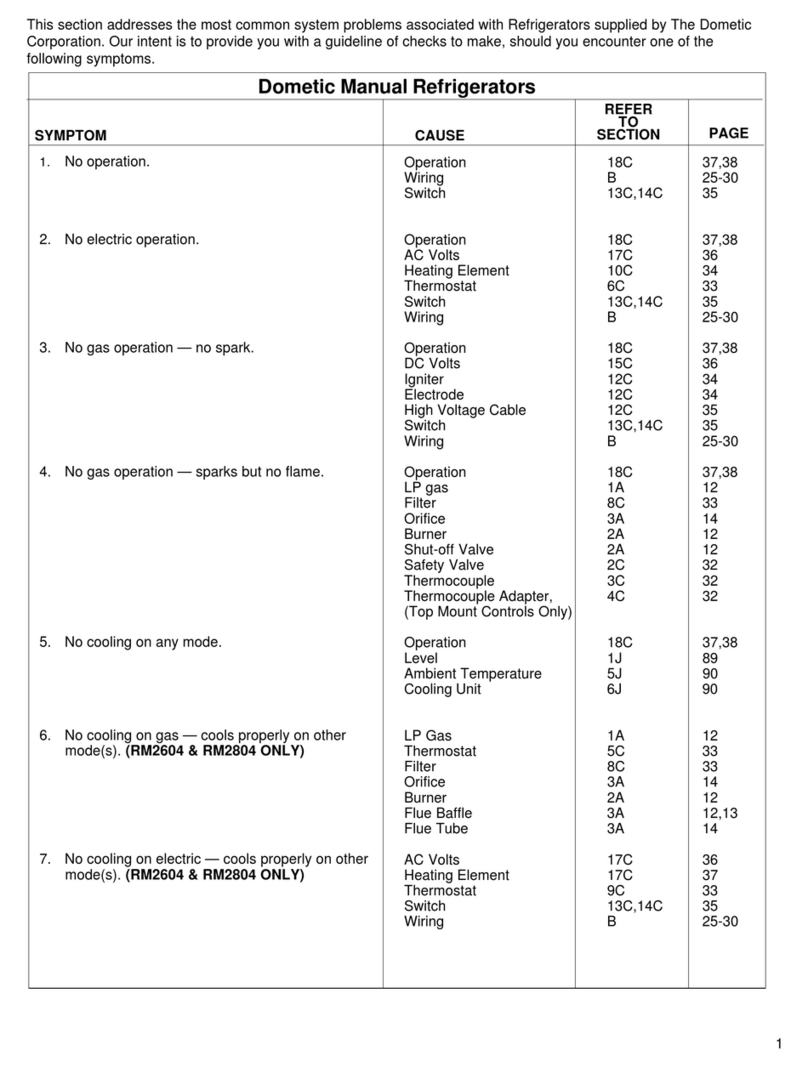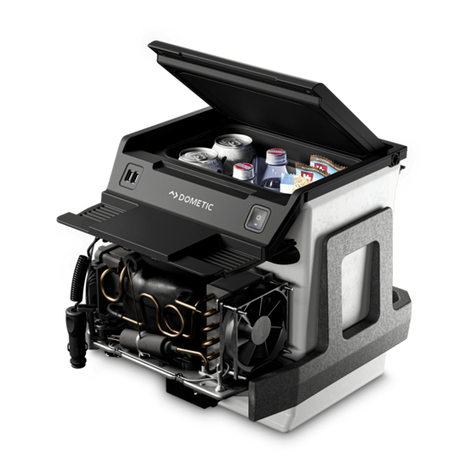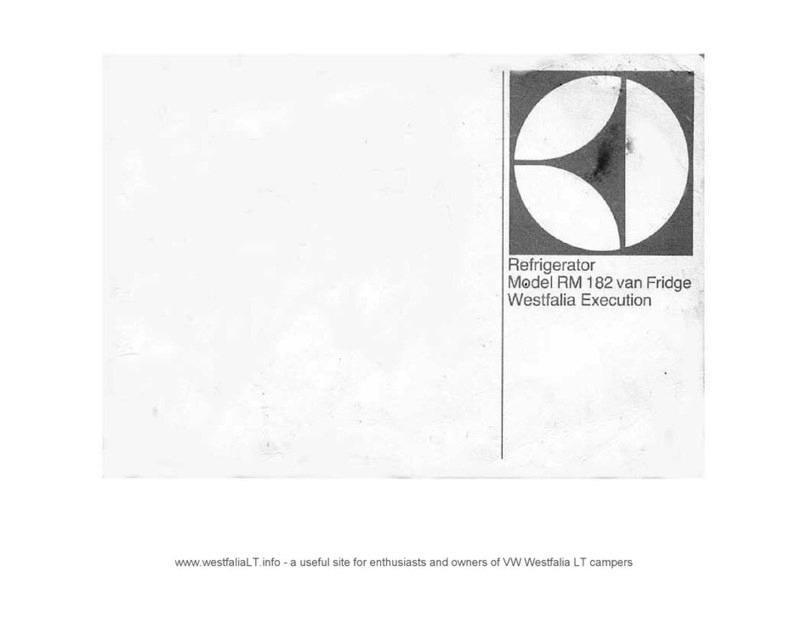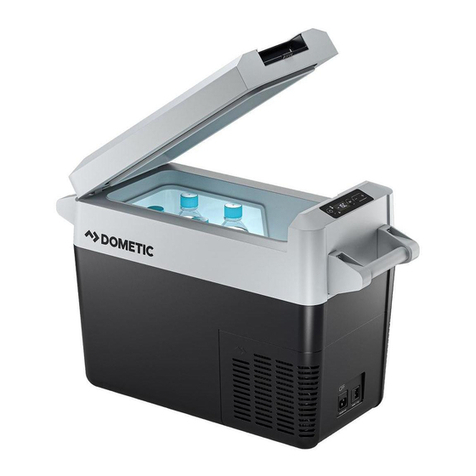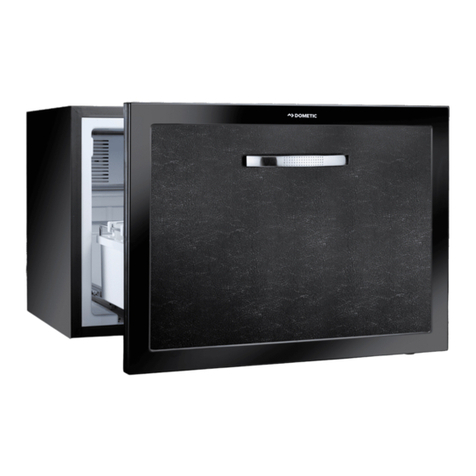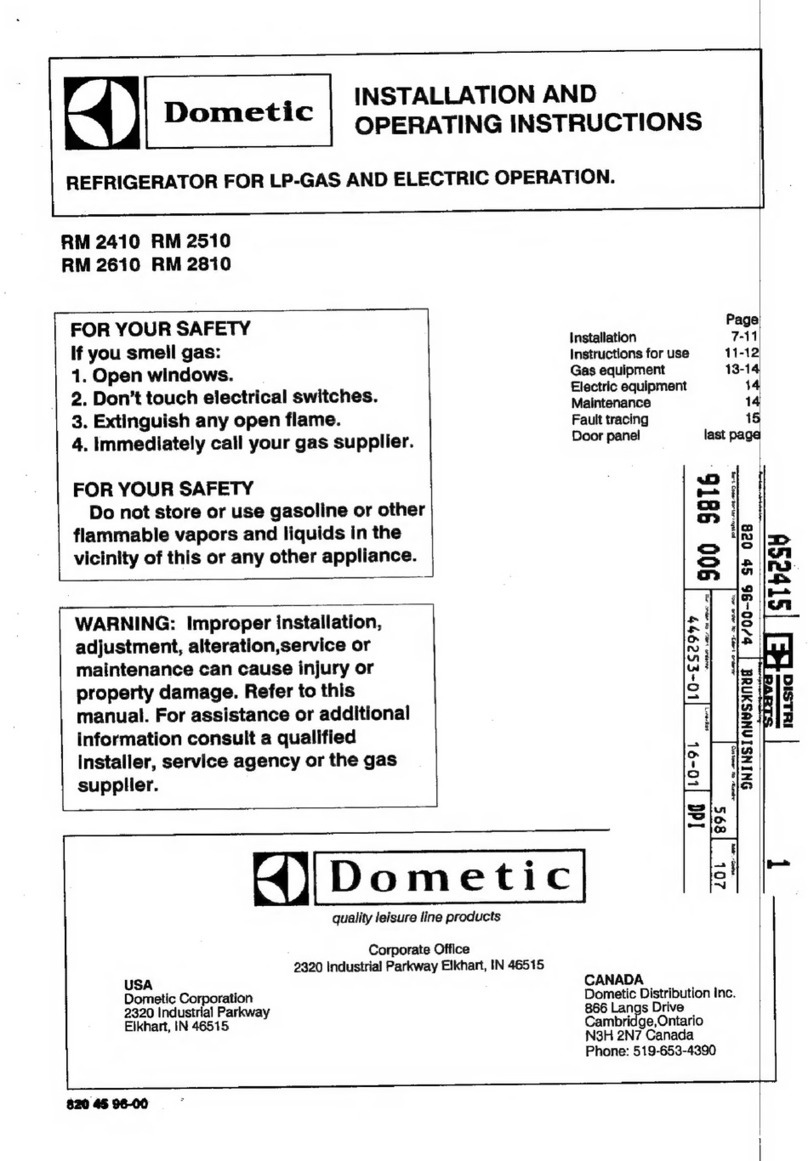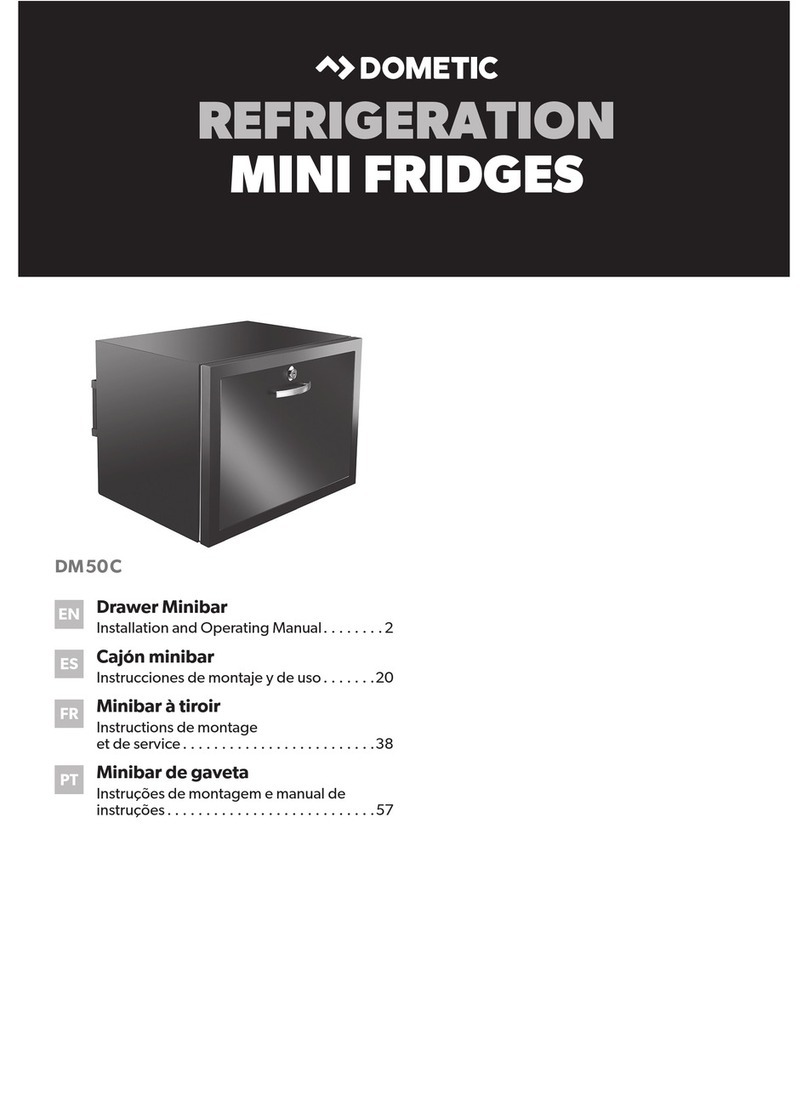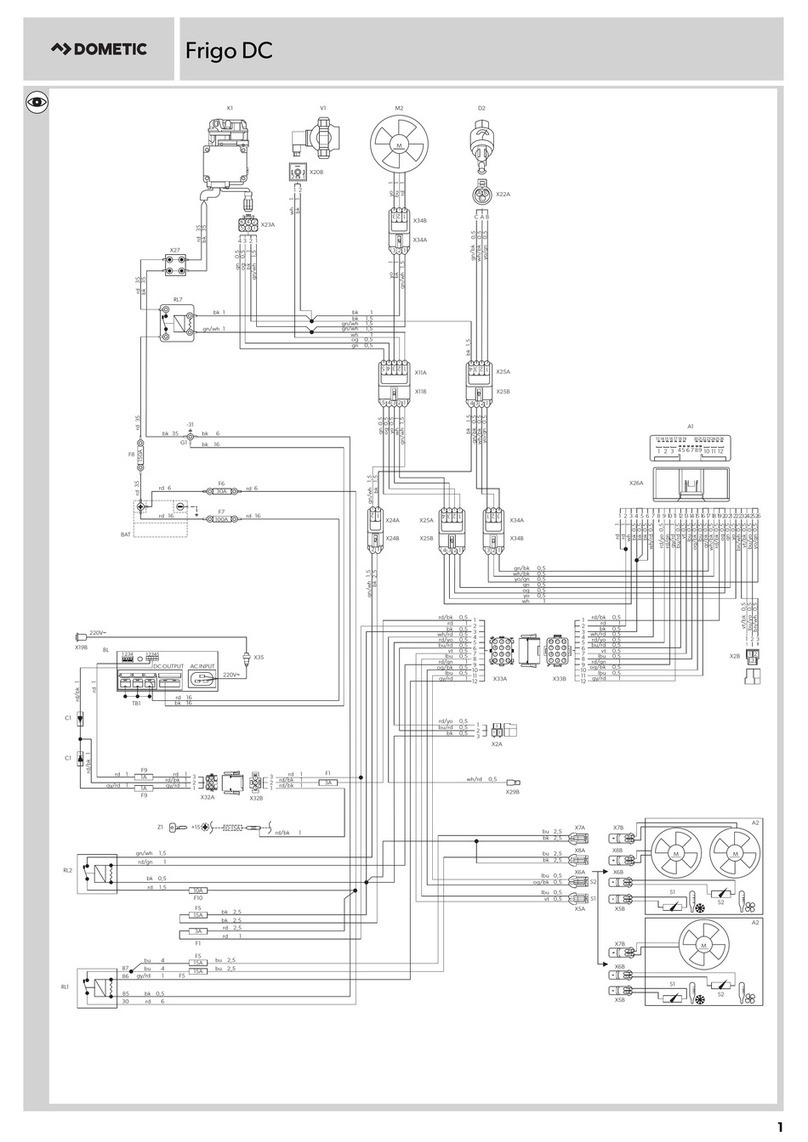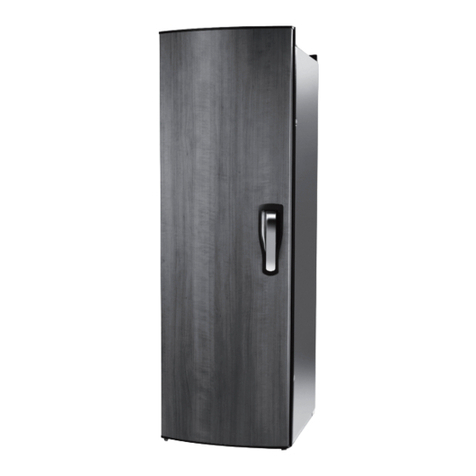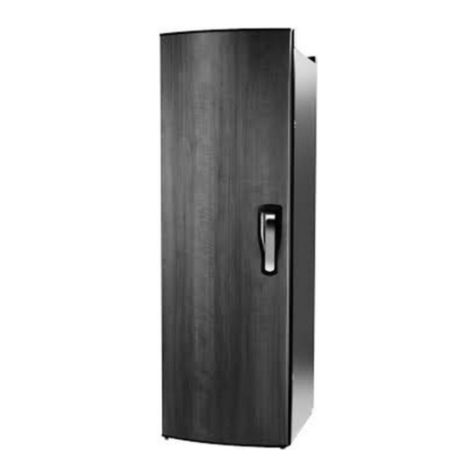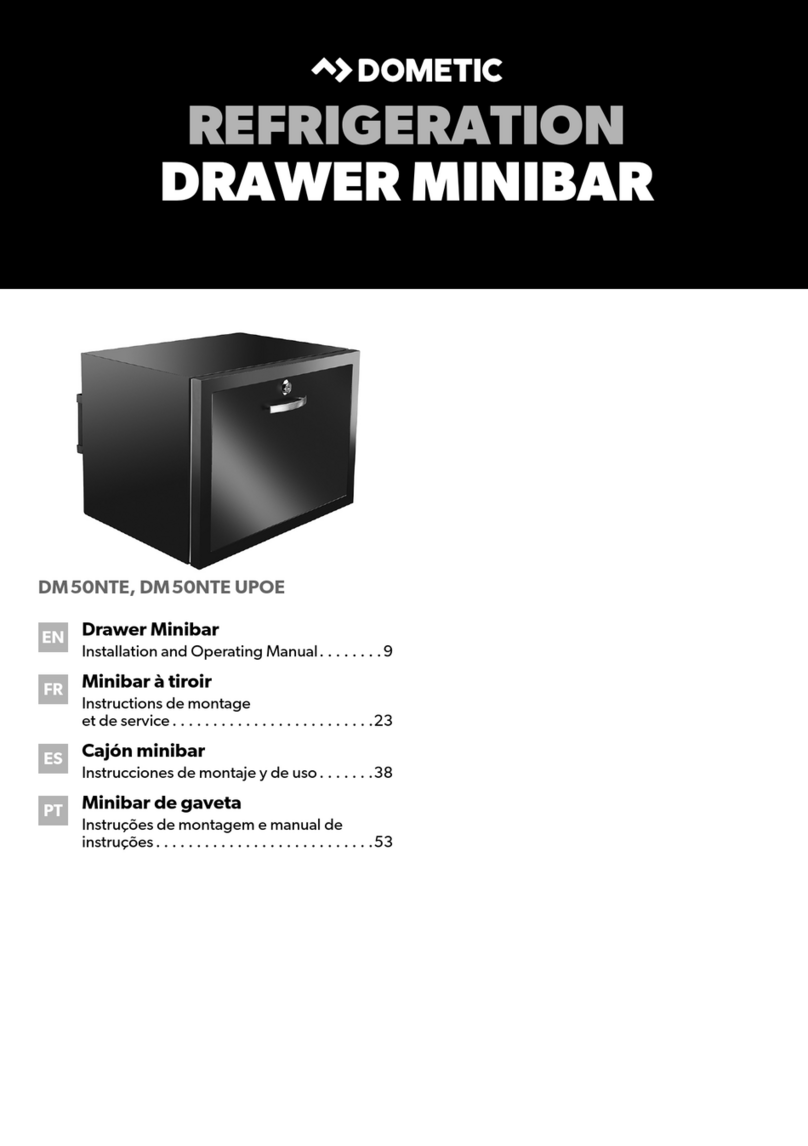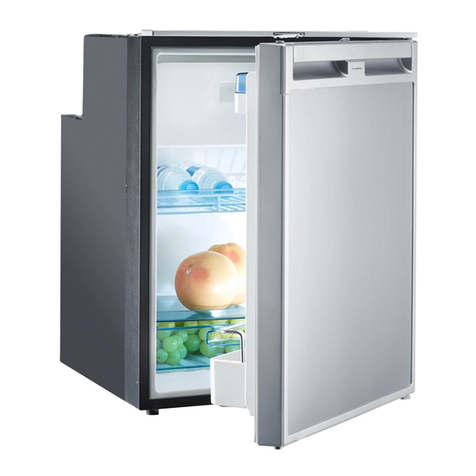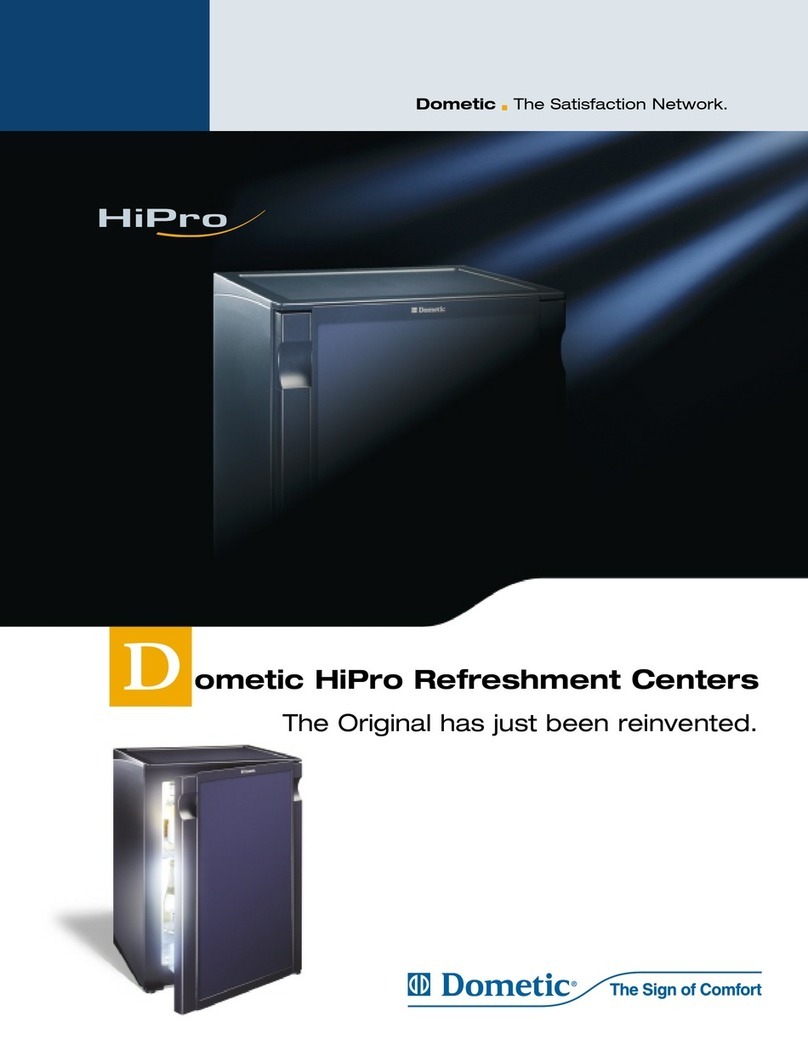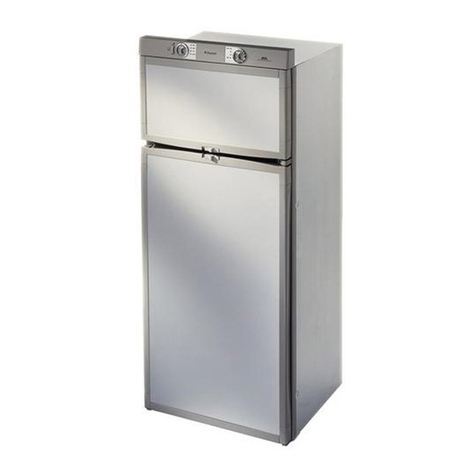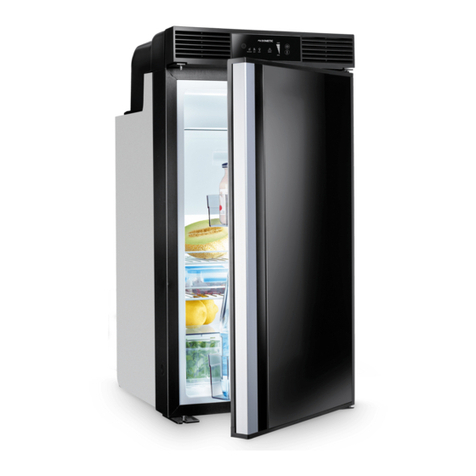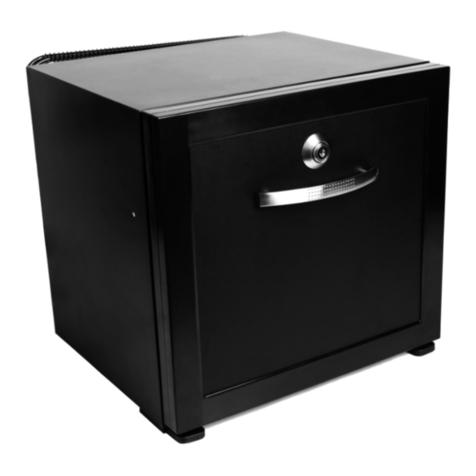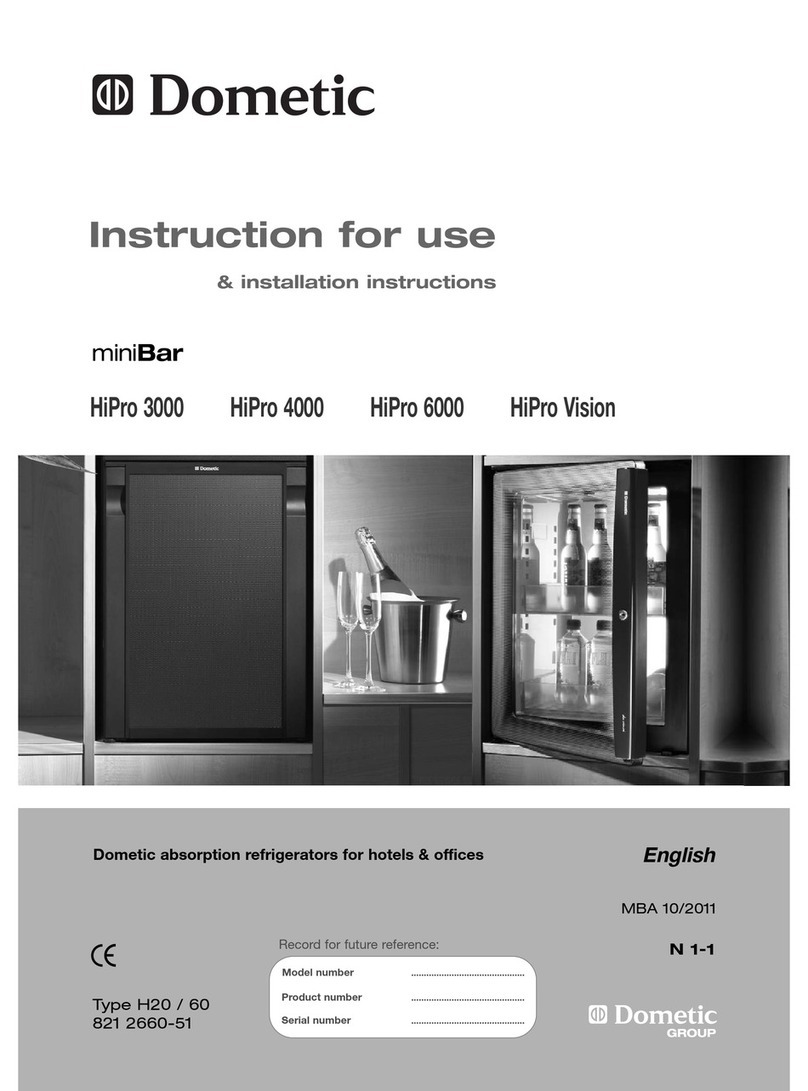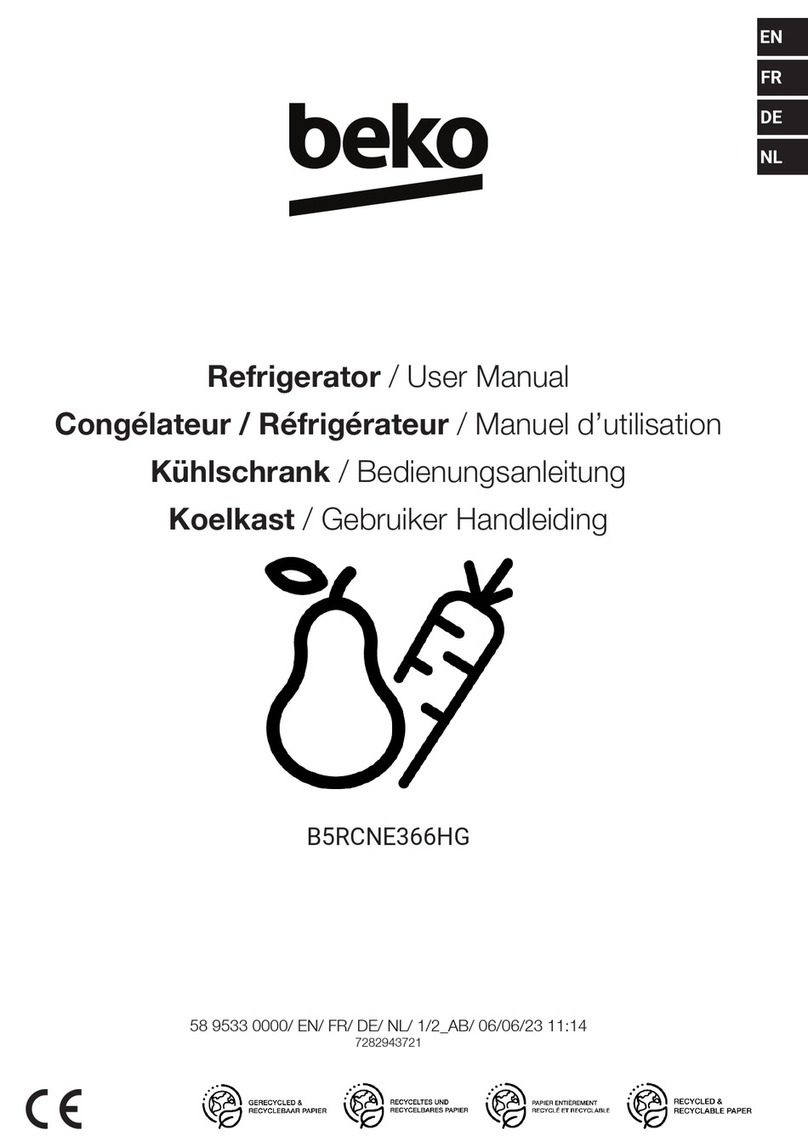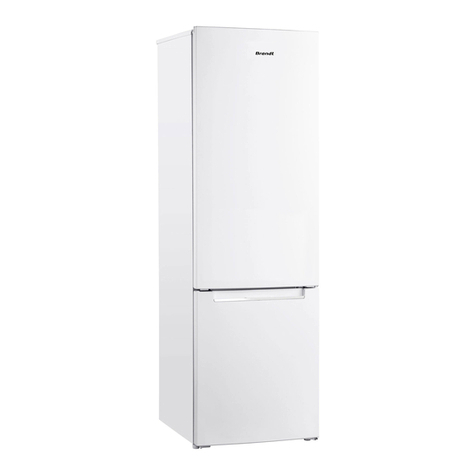D.
E.
After
the
flame lights, continue to hold button “C”
for an additional ten (10) seconds. Release the
button “C” and check the flame view port
“E”
to
makesurethe burnerdoes notgoout. Ifthe burner
goes out, repeat the lighting procedure Steps A.
through D.
Toshut off the refrigerator, turn Knob
“A”
to the
“OFF” position.
4.
Electric operation
A.
B.
P
Check to be sure the power cord is properly
connected tothe power supply. (See Fig.9).Ifthe
refrigerator isequipped for 12volt DCoperation,
the tow vehicle or caravan engine should be
running to prevent discharging the battery.
Turn Knob “A” to the position marked
“ELEC”
for 120volt AC operation or
“12V”
for 12volt DC
operation. (See Fig. 13).
Turn the thermostat Knob “6” one quarter (l/4)
“r
of a turn from the “OFF” position.
D. To
shut offthe refrigerator, turn Knob “A”
to the
“OFF” position.
5. Thermostat
The refrigerator isequipped with athermostat that can
be adjusted byturning knob “6” to a different setting
to maintain the desired cabinet temperature (See Fig.
13).
A
B.
C.
“OFF” Setting of the Thermostat: In gas
operation, the thermostat closes its main valve
and the burner runs continuously at the bypass
rate or pilot. In electrical operation, the contacts
in the thermostat are open and the heating
elements are off.
“MAX” Setting of the Thermostat: In gas
operation the thermostat allows the burner to
remain on high flame continuously. In electric
operation, the heating element is “ON”
continuously.
The thermostat can beadjusted between “MAX”
and “OFF” to obtain the desired cabinet
temperature. The closer the knob isto “MAX” -
the colder thecabinet temperature. The closerthe
knob is to “OFF” - the warmer the cabinet
temperature.
When the thermostat reaches the set
temperature, itwill cut the burner back to bypass
or, in electric operation, shut off the heating
element.
The setting ofthe thermostat isnotcritical, butwe
recommend it be adjusted to maintain adry frost
on the cooling fins. Adjust the thermostat knob
closer to “MAX” when the outside temperature
becomes warm.
6.
How to use the refrigerator
A. Food Storage Compartment
The food storage compartment is completely
closed and unventilated, which is necessary to
maintain the required low temperature for food
storage. Consequently, foods having a strong
odor or those that absorb odors easily should be
covered. Vegetables, salads, etc. should be
covered to retain their crispness.
The coldest
positions in the refrigerator are under the cooling
fins and at the bottom of the refrigerator. The
warmer areas are on the upper door shelves. This
should be considered when placing different types
of food in the refrigerator.
One-half of the lower door shelf is equipped
with fingers. The fingers are designed to prevent
largecontainers(half-gallonof milkorjuice)from
shifting or spilling while traveling.
B. Frozen Food Storage Compartment
Place
quick frozen
soft fruits and ice cream in the
coldest part of the freezer compartment, which is
at the bottom of the aluminum liner. In models with
a shelf, place these foods on or just below the
freezer shelf. Frozen vegetables may be stored in
any part of the freezer compartment.
This compartment is not designed for the
deep or quick freezing of food. Meat or fish,
whether raw or prepared, can be stored in the
frozen food storage compartment provided it is
first pre-cooled in the refrigerator. It can be stored
about three times longer in the frozen food
compartment as compared to the fresh food
compartment. To prevent food from drying out,
keep it in covered dishes, containers, plastic bags
or wrapped in aluminum foil.
C. Ice Making
Ice cubes can be made in the tray. Fill tray with
water to within l/4 inch @mm) from the top. For
faster ice making, place the tray in direct contact
with the freezer shelf.
To release the ice cubes, hold the tray with
both hands and twist the tray. Preferably, unused
cubes should be replaced in the tray. Refill the tray
with water and place the tray on the freezer shelf.
-9-
